How To Change Camera Settings On Android Phone
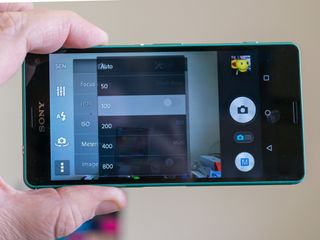
Your Android probably has a decent camera right out of the box. If y'all never touch any of the settings, and think a few basic techniques to get great pictures, you'll probably get those keen pictures. But you can take things a step farther by mastering a few basic controls in your camera app.
Knowing a bit more about how and why the basic camera settings work will requite you better pictures under a wider range of atmospheric condition than using the defaults volition. And the best function? It'southward all pretty easy to become a handle on.
READ Now: A beginners guide to Android photography settings
What is exposure value?
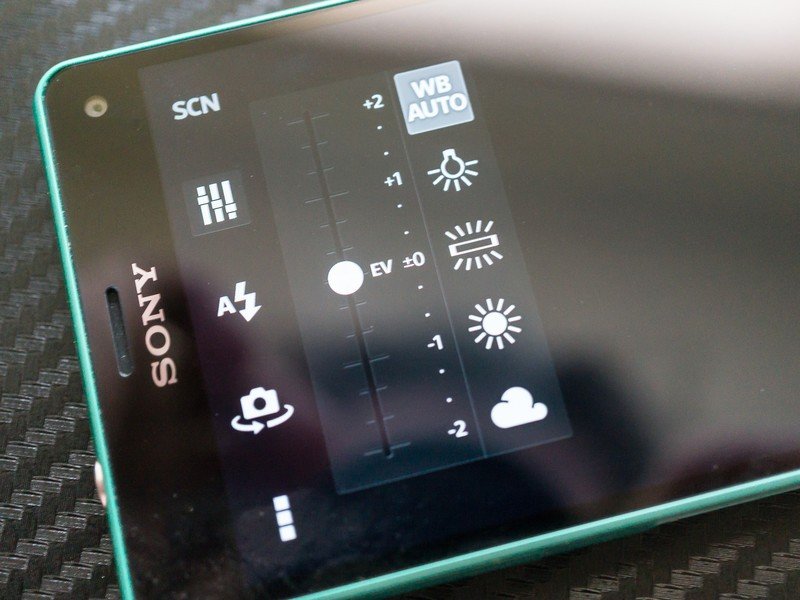
Exposure (when talking photography) is a measurement of calorie-free based on shutter speed, lens discontinuity, and illumination. Exposure value is exposure expressed as a number that's based on shutter speed and discontinuity. This is independant of any ISO setting. What this means is that no matter what combination of f number or shutter speed you used to reach a certain EV, the result will look the aforementioned as long as it's nether the aforementioned lighting.
On our Androids, we can't adjust the aperture (that's the f number the people making our phones like to tell united states of america) and in most cases we have trivial command over the shutter speed. Sometimes, we take no command over the lighting. In those cases, we tin can adjust the EV.
Y'all'll find the EV adjustment buried in the settings, and it will probable look similar a slider. You tin can move the slider to the positive (+) side, or to the negative (-) side. Each number represents a "stop", so when you hear people using that term you know they are talking nearly a alter to the EV of a picture.
Changing the EV towards the positive will brand your flick brighter. Changing the EV towards the negative will make your picture darker. Moving information technology besides far in either direction volition increase noise and may make your final image look bad, then it's best to make small adjustments if you make any at all.
What is ISO?
ISO (again, nosotros're talking cameras here) is the sensitivity of your camera to light. The lower the number, the less sensitive the sensor is to light, and the higher the ISO number, the more than sensitive information technology is to light. On digital cameras — like the ones in our phones — this is changed with an aligning of the indicate gain to and from the sensor.
For our needs, know that the more light you lot have, the lower ISO number you need to have enough low-cal to take a sharp picture. A lower ISO number is improve because increased signal gain and higher sensitivity to light means your pic will accept more noise in it.
You might need to bump the ISO number higher when shooting in depression light or when shooting pics of things that move a lot. But endeavour to keep the value as low equally you can for smoother images with less digital noise.
What is white balance?
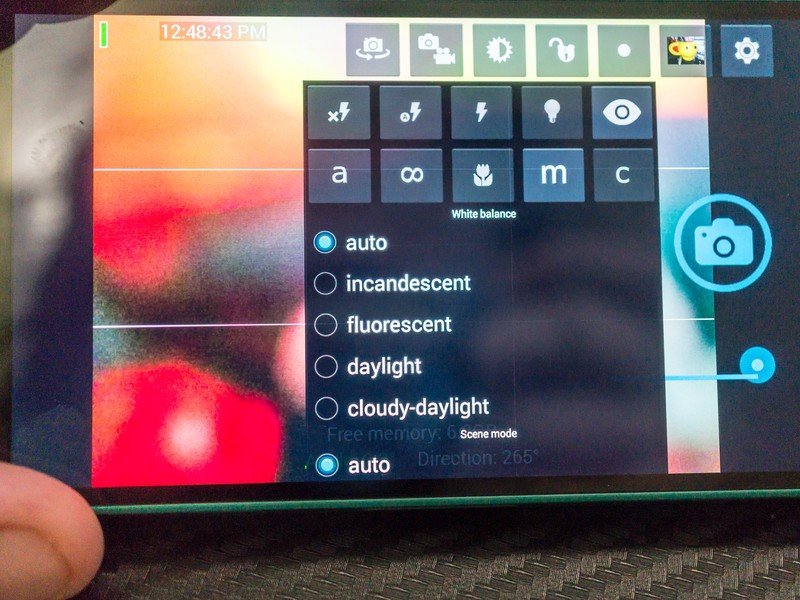
Not all lights are created equal. Light color is measured in temperature, and what looks similar natural sunlight to our eyes is a value around 5,500K (Kelvin) to 6,500K. Lower temperatures volition await yellow, and higher temperatures volition expect blue.
Our eyes practise a good job of adjusting for changes in light colour, only cameras by and large don't. Take a picture nether a absurd white fluorescent lamp and chances are your picture will have a blue color cast over everything. Have a flick under a standard tungsten lamp, and things will await yellow.
You can accommodate for this in your camera settings. Your white rest settings will offer different options for different types of light, and changing the white balance can make a world of difference.
Near attribute ratios
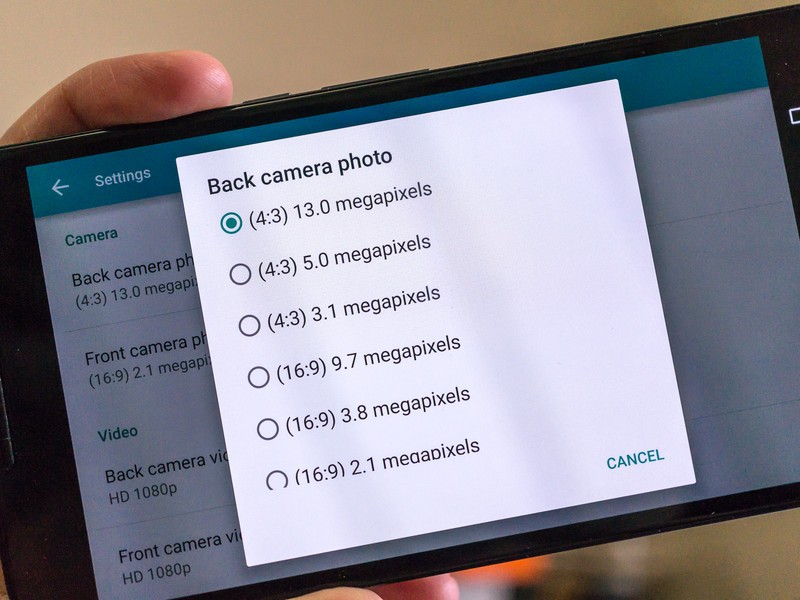
Aspect ratio is the relation of the width of your finished picture to its pinnacle. Usually expressed equally something like 16:9 or 3:2, the outset number is is the width and the second is the height. No matter what unit of measurement we utilise, the ratio stays the aforementioned: a picture iv inches wide and 3 inches tall has an aspect ratio of 4:3, and then does a moving-picture show that's four miles wide and 3 miles tall.
The attribute ratio you use is entirely upwards to you. Common choices — and the ones yous'll probable find on your phone — are 16:nine and iv:3. A 16:9 attribute ratio gives your pictures that widescreen wait, while a 4:3 setting is a more traditional print manner. If yous want your pictures to fill up the screen on your Android phone, y'all'll want to take them in 16:9.
Geotagging, and why you might not want to utilise information technology
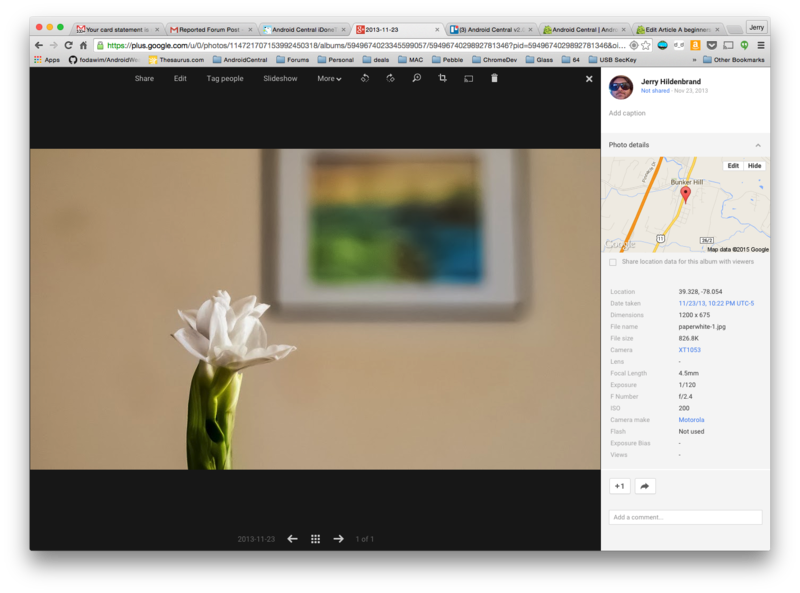
Geotagging is when your phone uses your location and embeds information technology in epitome information when y'all have a film. Apps can employ this information to see where (and when) you took a detail image, and do absurd things like show them on a map or make a travel diary. It'due south a neat trick, and it tin can be very useful.
It also can let anyone who knows how to look at the exif information of a moving-picture show (and that'due south really easy to do) know exactly where the picture was taken. If you don't want people to be able to run into where you were when you took a moving-picture show, make sure this setting is off. This is especially important for the kids. Think of the kids.
You'll find a way to toggle geotagging on and off in your camera settings.
Where did my picture get?
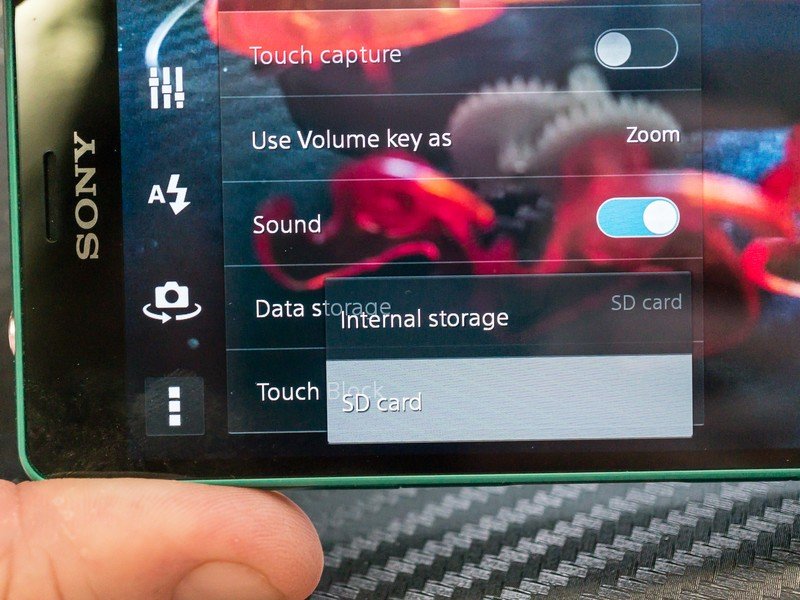
If you take a phone with an SD card, you might have to tell the camera awarding to apply it when saving pictures. You'll find this option in the app settings, and you can change it on the fly if you need to.
It'south worth noting that this is especially important when taking 4K video, as these files can become large.
No matter where you saved the pictures, chances are your favorite gallery app volition nonetheless be able to discover them. This is but a housekeeping and infinite effect.
These basics should go you started on the path to taking ameliorate pictures, no matter what Android you're using. We're going to exist exploring all things Android photography in the coming weeks, and so we'll have plenty to discuss.
The photography forums are a nifty place to have those discussions, and learn more tips from people who accept mastered the photographic camera on their phone.
Jerry is an amateur woodworker and struggling shade tree mechanic. There'south zippo he can't take apart, but many things he can't reassemble. You'll notice him writing and speaking his loud opinion on Android Cardinal and occasionally on Twitter.
Source: https://www.androidcentral.com/beginners-guide-android-photography-settings
Posted by: hebertidentradmus1951.blogspot.com

0 Response to "How To Change Camera Settings On Android Phone"
Post a Comment